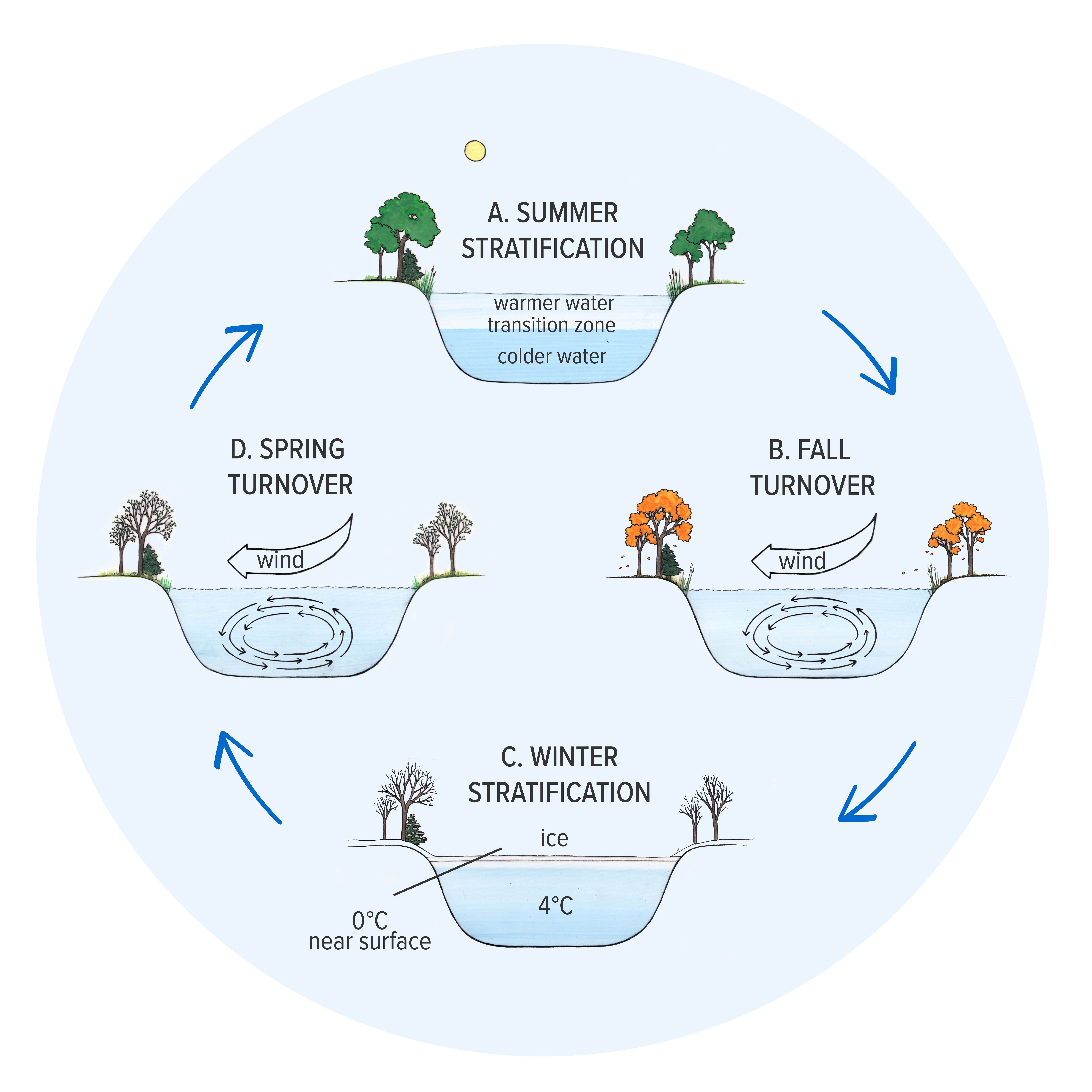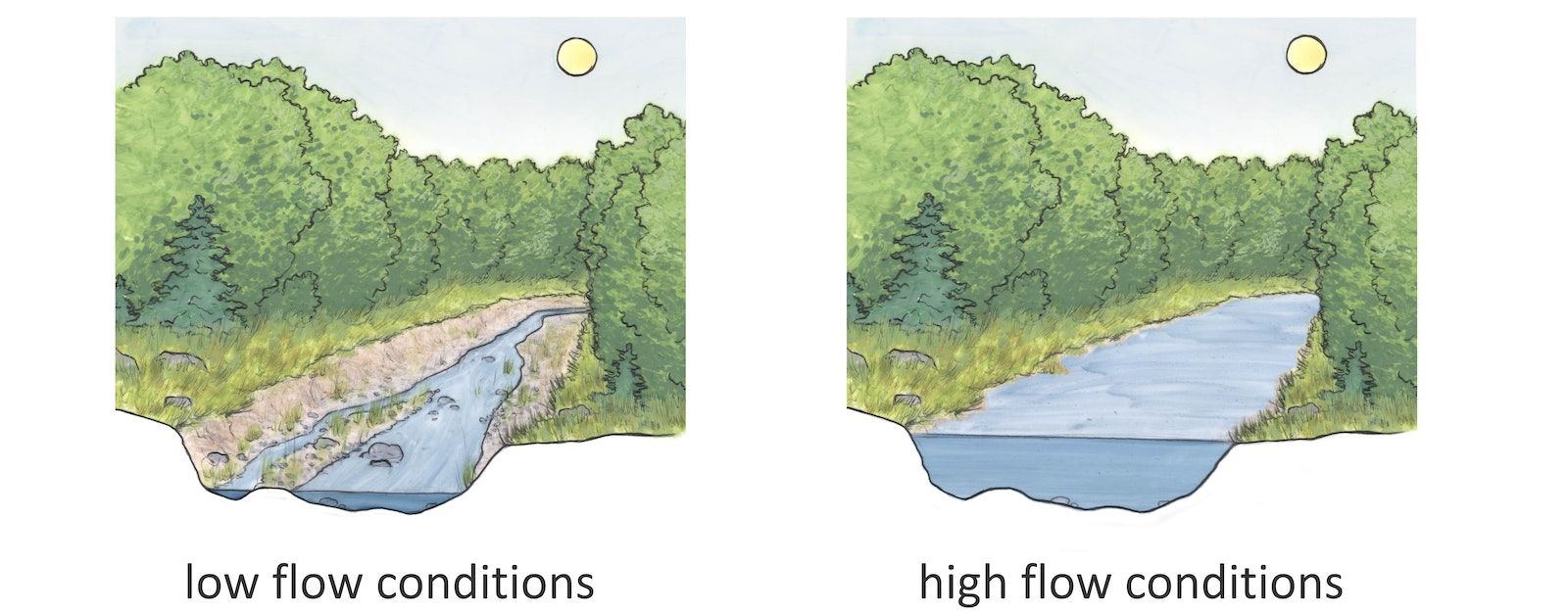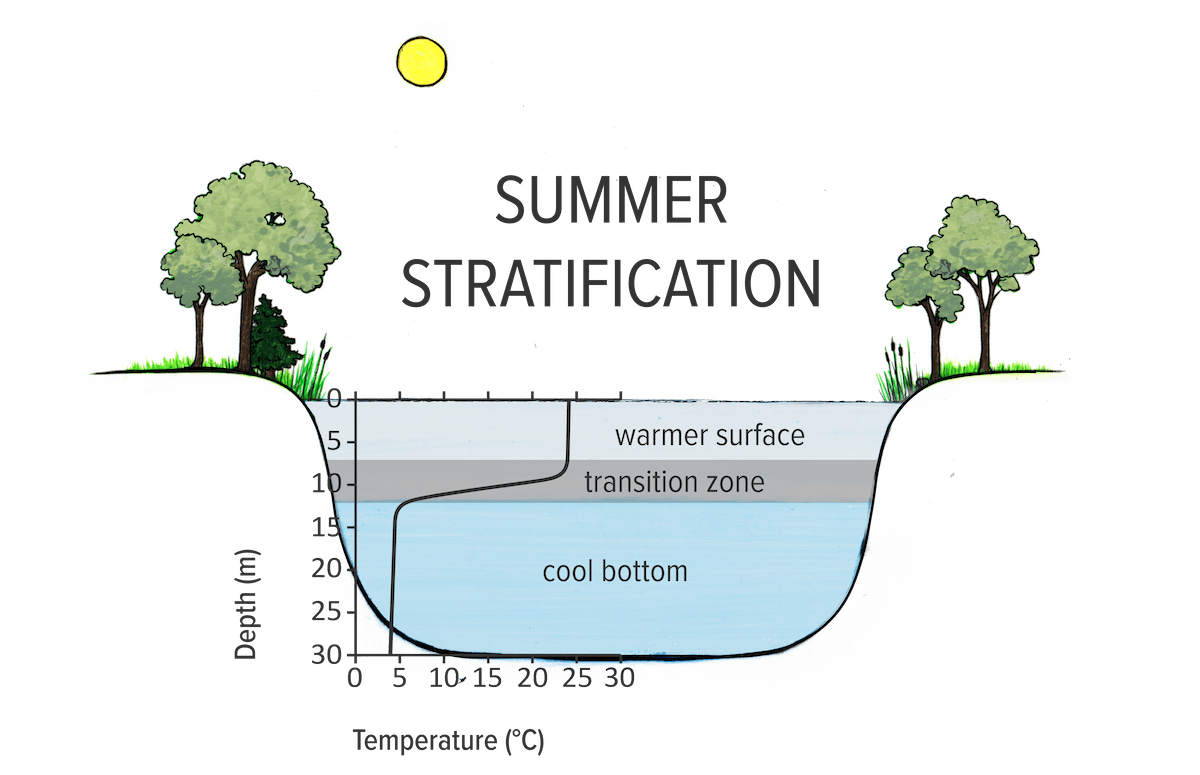What is it?
Temperature is a measure of how warm or cold the water is. This influences what types of fish and bugs are present in a river or lake. Temperature also influences how water mixes in a lake.
Sometimes lakes can have distinct layers of water with different temperatures. This is called thermal stratification.
Thermal stratification in lakes typically follows a seasonal pattern. However, lakes of different sizes and in different climatic regions will have varying levels of mixing. For example, shallower lakes do not stratify in the summer. In colder climates, some lakes may not warm above 4°C and will only mix once in the summer; others may remain covered with ice year-round.
Typical seasonal stratification and mixing cycle in lakes

A. As the surface waters of a lake warm in the summer, they become underlain by a colder, denser layer of water. Once this occurs, there is little mixing between the warm surface layer on the top and the cooler layer below.
B. In the fall, surface waters begin to cool and become more dense and heavy. This causes the water to mix through the depth of the lake, referred to as “fall turnover”.
C. As ice begins to form on the lake, the lake may stratify again. However, this time the surface waters (at or near freezing, 0°C) are underlain by slightly warmer water (about 4°C). This happens because water is most dense at 4°C.
D. In the spring as the ice cover breaks up, the water temperature becomes more uniform from the surface to bottom. This causes another period of mixing referred to as “spring turnover”. Then as the water at the top begins to warm even more, these stratification and mixing cycles are repeated.
Why does it matter?
Water temperature is important because it can determine where certain plants and animals can live. For example, some fish can only live in colder water and when water temperatures increase in the summer, these fish will move to deeper areas where the water is still cold. Some plants and animals will become dormant if water temperatures drop very low but will grow very quickly in the summer when water temperatures increase.
Temperature also has an important influence on the amount of dissolved oxygen in water, since colder water can hold more oxygen than warm water.

Smaller, shallower lakes and streams change temperature more quickly than large lakes and rivers since there is less water to be heated or cooled. This means low flow levels in a river can have an impact on water temperatures, especially during warm, dry periods. In some rivers and streams, upwelling groundwater provides areas of cooler water for fish.
Climate change may affect water temperatures and therefore the distribution and survival of many fish. If temperatures become too warm during the summer in lakes and rivers, some fish species that cannot live in warm waters may disappear or be replaced by fish that can live in warmer waters.
How is it measured?
Water temperature is best measured directly in the water – either by thermometer or using a probe with a temperature sensor. In lakes, water temperature should be taken at several depths since lake water does not always mix completely from top to bottom.

Water temperature is influenced by: water clarity (e.g., Secchi depth, water colour), water levels/flow.
Water temperature influences: dissolved oxygen, productivity measures.